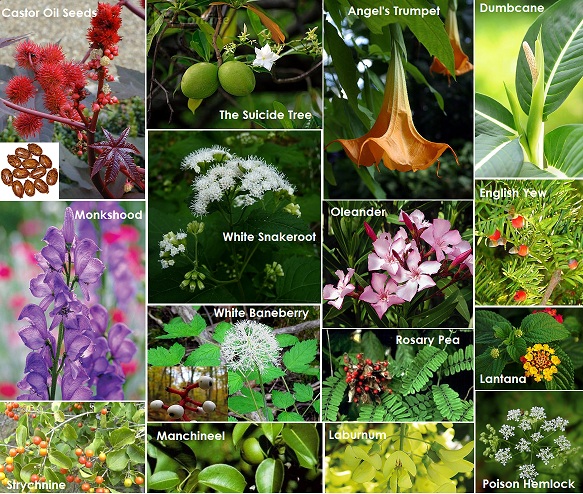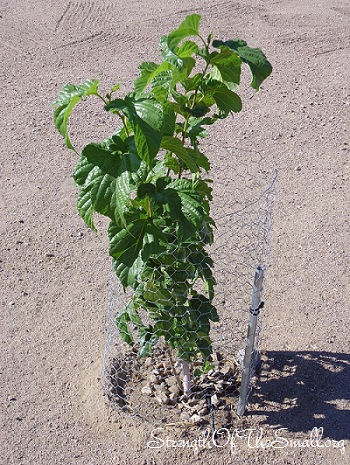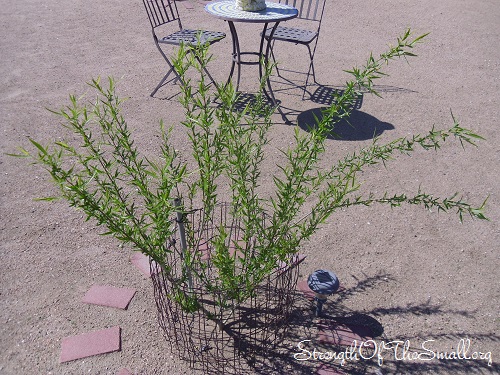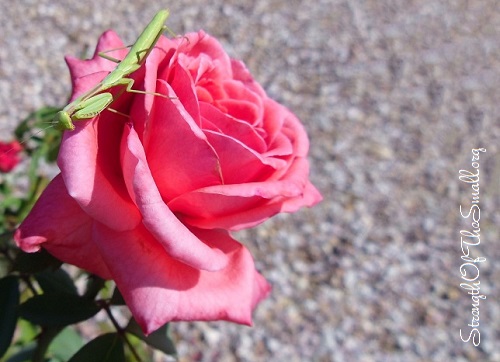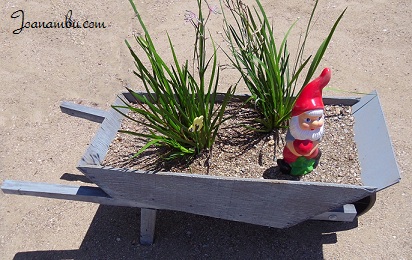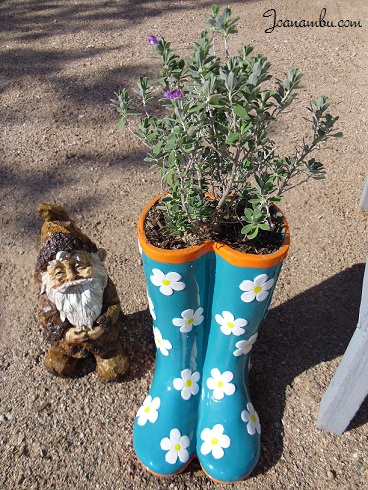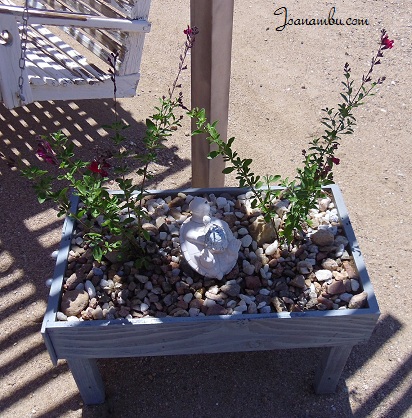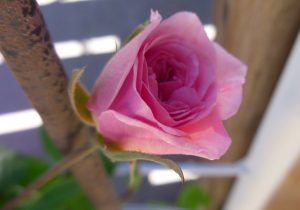For the past couple of weeks, I noticed a reduction in the amount of leaves in my barrel planters. At first I placed the blame on the Grasshoppers, then early this week, we moved all the barrels in the garden storage shed after discovering that some of the plants in the barrels were completely gone and the others were half ways gone. The rabbits ate the early Daffodils sprouts, some of my Anigozanthos and a few of my Stella D’Oro Daylily. Though heartbreaking, I couldn’t do much about it then because of the freezing temperatures.
This morning, however, I was able to step out in the backyard all thanks to the warm weather. Since the barrels were gone, these little bunnies decided to eat all of my Aptenia Cordifolia (two out of four pots) and started working on my Brooms. We took a trip to Lowe’s and bought some Chicken Wire. Prior to that, I cut a few stems from my other two ‘untouched’ pots and I propagated them. This time, I placed the pots in my Vintage Planter Stands. Like most succulents, Aptenias are easy to propagate as they sprout new growth at their base when put into contact with moist soil. They are beautiful in rock gardens and make beautiful flowering ground cover.

Steps to Propagate Aptenia Cordifolia
- Using a pruning tool or a sharp knife, cut some stems.
- Dig a few holes in the potting mix with your finger or with a weeder.
- Plant the end of the cut stems in the holes and press the soil around their base to set them in place.
- Place the pot in direct or indirect sunlight.
- Water the soil (do not over water).
Rabbits are cute little creatures and some people enjoy petting them. To gardeners however, these adorable creatures are one of their worst nightmares. They are voracious eaters as they would eat pretty much everything tender and they have a very rapid reproductive rate. How can we keep them away from our gardens?
Rabbits (Bunnies) Repellents
- Put up a Chicken Wire Fence, Mr. McGregor’s Fence
- Traps (close to Rabbit feeding or resting areas)
- Use raised Garden Beds
- Buy Hot Pepper Spray and use it on plants or learn to make your own (click here or here)
- You could hunt them down
Happy Gardening!
